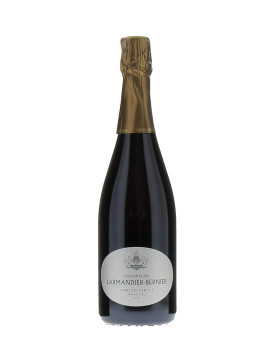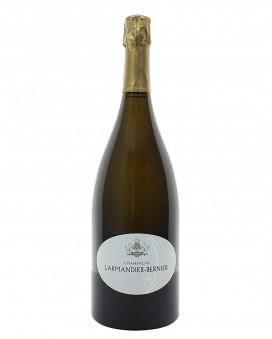- Abelé 1757
- Agrapart
- Alfred Gratien
- Apollonis
- AR Lenoble
- Armand de Brignac
- Ayala
- Barons de Rothschild
- Beaumont des Crayères
- Benoît Lahaye
- Bergeronneau Marion
- Besserat De Bellefon
- Billecart - Salmon
- Blin
- Bollinger
- Bruno Paillard
- Canard Duchene
- Castelnau
- Cattier
- Charles Collin
- Charles Heidsieck
- Chartogne-Taillet
- Chassenay d'Arce
- De Saint Gall
- De Sousa
- De Venoge
- Delamotte
- Demoiselle
- Deutz
- Devaux
- Diamant Vranken
- Dom Perignon
- Drappier
- Duval - Leroy
- Egly-Ouriet
- Epc
- Fleury
- Gosset
- Heidsieck & Co Monopole
- Henri Giraud
- Henriot
- Jacquart
- Jacquesson
- Jean-Noel Haton
- Joseph Perrier
- Konrat
- Krug
- Lafitte
- Laherte
- Lallier
- Lanson
- Larmandier-Bernier
- Laurent-Perrier
- Leclerc Briant
- Lombard
- Mailly Grand Cru
- Moet Et Chandon
- Montaudon
- Moussé Fils
- Mumm
- Napoleon
- Nicolas Feuillatte
- Pannier
- Paul Goerg
- Perrier Jouet
- Philipponnat
- Pierre Gimonnet
- Piper - Heidsieck
- Pol Roger
- Pommery
- Rare Champagne
- Louis Roederer
- Ruinart
- Salon
- Selosse
- Soutiran
- Taittinger
- Thienot
- Tsarine
- Veuve Clicquot
- Veuve Lanaud
Larmandier-Bernier Champagne

Maison Larmandier Bernier is a young family business founded in 1971. It has been cultivating about 15 hectares of biodynamic vines for more than 20 years.
The domain is located on the famous Côte des Blancs and all the champagnes come from terroirs classified essentially as Grands Crus with 85% of Chardonnay and 15% of Pinot Noir. A natural viticulture which offers us authentic cuvées, with low dosage, of a great intensity.
Champagnes of very high quality that are regularly praised by the Guides. A House to discover without waiting...
Champagne LARMANDIER-BERNIER
A natural approach to viticulture, because it makes sense...
It is not for reasons of tradition that our approach to viticulture is completely natural; it is just because it makes sense. The creation of a great Champagne, like the creation of any great wine, begins in the vineyard. Indeed, it is the grapes that contain the qualities and the authenticity that no man could ever invent. The recipe for good-quality grapes is simple but demanding: old vines, working the soil, moderate yields; vines which thrive without having fertilisers forced into them, and mature grapes picked by hand. We have not chosen the easy path of current methods, but the far more rewarding course of cultivating the vine intelligently. Striving for wines which express their terroir in a natural way...
Our vineyard - about fifteen hectares, 33 years old on average – lies on the terroirs of the Côte des Blancs: Vertus, a premier cru village, Cramant, Chouilly, Oger and Avize, all grand cru villages.
We are fortunate enough to work on superb terroirs; it would be a shame if we didn't "bring them to your glass".
But the terroir is not enough; it is to wine what the score is to music. What's the point if the grape variety, the vineplant (the instrument) and the winegrower (the performer) are not up to standard?
Consequently, our vines are cultivated with respect for the terroir (ploughing, which favours deep-reaching roots and preserves the life of the soil) and respect for the balances of the plant throughout the growing period. In this way, the yields are naturally moderate and the wine shows its appreciation, through both its structure and its maturity.
Our vineyard is planted with 85% Chardonnay and 15% Pinot Noir. The grapes are harvested manually.
Making and maturing the wines...
The grapes, picked by hand, are placed in our bladder press. We take time to press gently, so as to extract the purest juice possible. Each cru is vinified separately. For fermenting and maturing, we strive to choose the ideal correspondence between the terroir and the vessel used: temperature-controlled stainless steel tanks, traditional vats, wooden vats or casks.
The alcoholic fermentation begins spontaneously thanks to the natural yeast present on the bloom of the grapes. The wines are matured on their lees throughout the winter: malolactic fermentation, a light bâtonnage (stirring) depending on the cuvée and the year.
In the spring, after many tastings, we decide on the blending (or we decide not to blend for the cuvées coming from a single vineyard like 'Terre de Vertus' or 'Vieille Vigne de Cramant'). The wines are bottled in May and taken down into the coolness of our cellars where the second fermentation can take place peacefully.
Ageing: our bottles wait patiently and mature for several years in our cellars dug out of the chalk (the temperature there is practically constant throughout the year).
When the wines are ready, they are riddled. Next, we disgorge each bottle by hand three to six months before putting it on the market. The dosage which is then chosen depends on the cuvée. For us, it must be discreet, as our priority is always the same: to allow the terroir to express itself.
Biodynamic viticulture:
After visiting leading winegrowers in Alsace and Burgundy, we became aware that it was necessary to question our way of working: we were fortunate enough to have fine terroirs, mature vines, but our practices had drifted little by little towards progress and easy solutions (weed-killer, …). We had begun to breathe life back into our soil at the beginning of the 90s (working the soil and abandoning the use of weed-killer). Then slowly, we learned how to practice biodynamic viticulture. After obtaining some encouraging results on part of the estate, we decided to extend the practice to all of our vineyards.
Our human resources (ie, Pierre) were not enough, and so we called on a helicopter pilot (an aerobatics ace) who reserves the use of a tank for us (without chemicals). This allows us to apply the biodynamic preparations on the day and at the time desired, thus respecting the biodynamic calendar.
Some might say that this evolution is the latest trend, that it's fashionable… For us, it's a little more than that. We noticed that the chemical techniques used today consist in responding to each disease with a specific product. This sort of logic endangers the overall balance of the plant with its so-called 'targeted' aggressions but which are more powerful from one year to the next. We want to relive our vineyards by creating or recreating a natural balance between the diseases and the natural defences of the vineyard, between harmful fauna and natural predators. Our approach consists in striving to grasp every aspect of the vine...
Trusted Reviews
97% of satisfied customers Shipping 24H
Order before 11AM Gift Message
free + 1200 références
in stock Storage
Hydro-regulated Secure Payment
Credit Card, Amex, Paypal, Bank transfer 


















